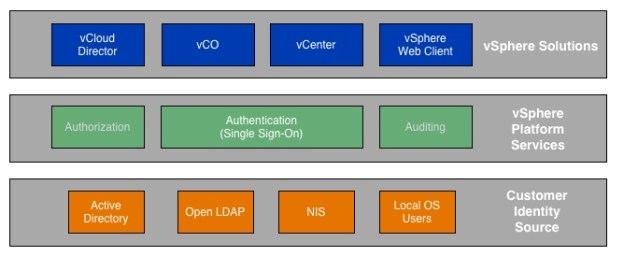VMware has announced the release of the new vSphere 5.1 solution. Together with this new release, VMware has also announce it’s new VMware vCloud Suite 5.1 licensing model. This model combines multiple components (vSphere Enterprise Plus, vCloud Director, vCloud Networking and Security, etc.) into a single product with a single license. All virtual machines running on a properly licensed vCloud Suite processor can use all components included in that vCloud Suite edition.
Licensing per processor
As mentioned above the licensing unit takes place per-processor. VMware no longer limits it’s customers physical resources and on the number of virtual machines!!! VMware has listened to the VMware Community and no longer applies the vRAM principle. Or like other call it, the vTax. The VMware vCloud Suite 5.1 is licensed per physical processor. With all physical processors licensed in a server a customer can run all VMware products on top of this server that are licensed within the bundle.
vCloud Suites Editions

There are 3 editions available for the vCloud Suites :
1. VMware vCloud Suite Standard; vSphere Enterprise Plus, vCloud Director, vCloud Connector & VMware vCloud Network and Security Suite Standard.
2. VMware vCloud Suite Advanced; vSphere Enterprise Plus, vCloud Director, vCloud Connector & VMware vCloud Network and Security Suite Advanced and vCOPs Advanced.
3. VMware vCloud Suite Enterprise; vSphere Enterprise Plus, vCloud Director, vCloud Connector & VMware vCloud Network and Security Suite Enterprise, vCOPS Enterprise, vFabric Application Director and SRM.
So what’s the deal?
In my opinion VMware tried to simplify the whole licensing part of building a vCloud solution. Most customers that build a private cloud in general want to build such a vCloud solution in an easy manner, but it also needs to be easy to manage, must be monitored and should work in case of a disaster.
All of these components are in the bundle that is licensed with vCloud Suite Enterprise edition. An easy licensing path on the road to your own private vCloud. Most companies already have VMware vSphere licenses and VMware also provide an upgrade path toward the new VMware vCloud Suite licenses. For upgrading VMware has introduced the Fair Value Conversion Program that can be found at http://www.vmware.com/go/ vcloud-suite-licensing.
For more information on the VMware vCloud Suite licensing see the vCloud Suite 5.1 Pricing and Packaging Whitepaper or talk to your own VMware sales representative.


